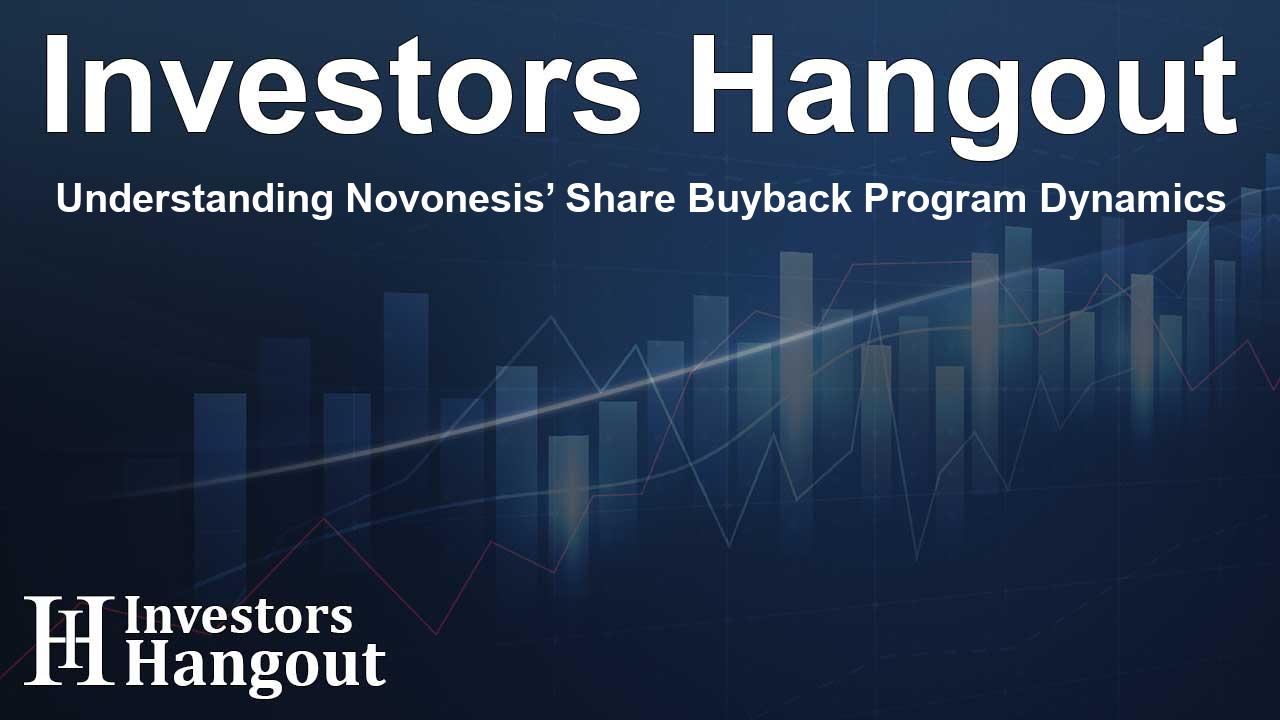Understanding Novonesis’ Share Buyback Program Dynamics

Overview of Novonesis’ Share Buyback Program
Novonesis’ share buyback program signifies an important strategy for enhancing shareholder value. This program enables the company to repurchase its own shares from the marketplace, offering various benefits to both the firm and its investors. By reducing the number of outstanding shares, Novonesis aims to increase earnings per share and potentially drive up the stock price, creating a more favorable perception in the market.
Key Components of the Buyback Strategy
The primary goal of any share buyback program, including that of Novonesis, is to signal financial strength and confidence from the management. By returning cash to shareholders directly, the company demonstrates its belief in the stability and future growth of its operations. This strategy can be particularly appealing during times of market uncertainty, reflecting an assurance in the company’s ongoing performance.
Shareholder Benefits
For shareholders, the buyback program can provide several advantages. Firstly, by reducing the supply of shares available in the market, buybacks often enhance the value of existing shares. Secondly, the company could be perceived as financially robust, which can attract more investment. Additionally, returning capital through buybacks can be seen as more favorable than dividends, especially for tax reasons in certain jurisdictions.
Market Reactions and Implications
Market reactions to buyback announcements can vary based on prevailing investor sentiments. Generally, a well-communicated buyback program tends to lead to positive reactions, as it indicates that a company is taking actionable steps to enhance its perceptions and performance. For Novonesis, the strategic execution of their buyback initiatives may also encourage current shareholders to retain their investments, fostering a sense of stability.
Impact on Stock Performance
As share buybacks can positively influence stock performance, investors often look for patterns following such announcements. In many cases, companies experience a surge in stock prices as confidence instills in investors. For Novonesis, the market performance post-buyback announcement will be closely scrutinized, particularly by analysts seeking to gauge the effectiveness of the program.
Monitoring the Buyback Activities
Tracking the progress of Novonesis’ buyback program can provide insights into the company’s management practices and financial health. Investors should stay informed about the scale and execution of buybacks, as these factors can directly impact their investment decisions. Auditing the shares repurchased over time and the corresponding effects on stock valuation would be crucial for assessing the overall success of the program.
Conclusion
Overall, Novonesis’ share buyback program stands as a testament to its commitment to delivering value to shareholders while simultaneously reinforcing its market position. The intrinsic benefits of such initiatives can be far-reaching, impacting investor confidence, stock valuation, and market perception. As Novonesis navigates through its program, stakeholders must remain vigilant about its implications for both the company and the broader market environment.
Frequently Asked Questions
What is a share buyback program?
A share buyback program is when a company repurchases its own shares from the market, reducing the number of outstanding shares and returning value to shareholders.
How does a buyback affect share price?
Share buybacks usually lead to an increase in share price as the reduction in outstanding shares can enhance earnings per share, making the remaining shares more valuable.
Why would a company choose to execute a buyback?
Companies might execute a buyback to signal confidence in their financial health, return cash to shareholders, and manage their capital structure more effectively.
Are there risks associated with buybacks?
Yes, risks include the potential for misallocation of resources if the buyback occurs at inflated prices and a lack of investment in growth opportunities.
How can investors monitor buyback activities?
Investors can monitor buyback activities by reviewing company announcements, financial reports, and any updates regarding the number of shares repurchased over time.
About The Author
Contact Riley Hayes privately here. Or send an email with ATTN: Riley Hayes as the subject to contact@investorshangout.com.
About Investors Hangout
Investors Hangout is a leading online stock forum for financial discussion and learning, offering a wide range of free tools and resources. It draws in traders of all levels, who exchange market knowledge, investigate trading tactics, and keep an eye on industry developments in real time. Featuring financial articles, stock message boards, quotes, charts, company profiles, and live news updates. Through cooperative learning and a wealth of informational resources, it helps users from novices creating their first portfolios to experts honing their techniques. Join Investors Hangout today: https://investorshangout.com/
The content of this article is based on factual, publicly available information and does not represent legal, financial, or investment advice. Investors Hangout does not offer financial advice, and the author is not a licensed financial advisor. Consult a qualified advisor before making any financial or investment decisions based on this article. This article should not be considered advice to purchase, sell, or hold any securities or other investments. If any of the material provided here is inaccurate, please contact us for corrections.
